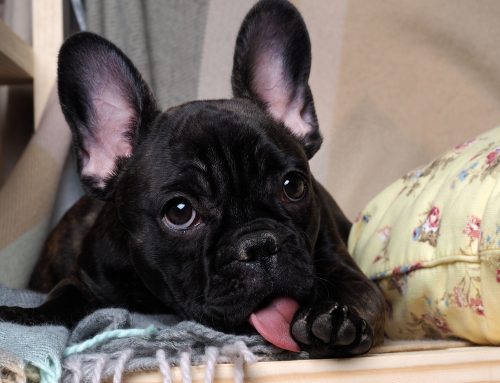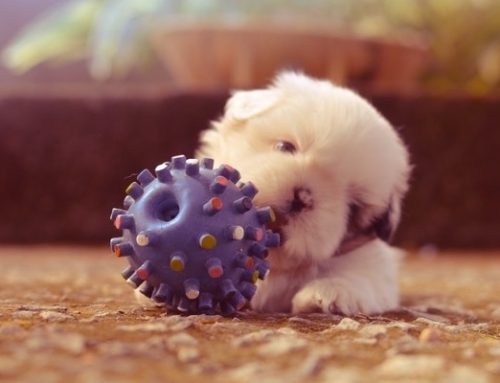Are you familiar with the saying, “Raise one’s hackles?” Maybe you’ve used the idiom before when talking about a person, or maybe you’ve actually seen it in action with your dog. Either way, raising one’s hackles is a gesture you should pay attention to, especially with your dog.
While commonly viewed as a sign of aggression, your dog’s raised hackles don’t automatically signify hostile behavior. In combination with your dog’s body language, hackles can signify many different feelings. In order to help you determine what your dog is feeling, it is important to understand what hackles are and what function they perform.
What are Hackles?
Hackles are the hairs that run along a dog’s spine. They typically begin at the neck and extend to a dog’s tail. Below a dog’s skin are muscles that are attached to his or her hackles. These muscles are called arrector pili (Byer). As these muscles become activated, air becomes trapped between hair shafts causing your dog’s hackles to stand up (Farricelli, 2018). The phenomenon of a dog’s hackles standing up is called piloerection. How piloerection presents itself, or the pattern it takes on when raised, is different in each dog. Some dog’s hackles will stand in line along their backbone, and you may notice hackles across the shoulders, along parts of the back, or even at the base of the tail (London, 2012).
Why do Dogs have Hackles?
You know how you sometimes get goosebumps when you experience certain feelings such as fear, anger, or excitement? Hackles work in the same way. According to Adrienne Farricelli, “These muscles are innervated by the sympathetic branch of the autonomic nervous system and are therefore not under conscious control” (Farricelli, 2018). In other words, raised hackles are an involuntary response brought on by some type of adrenaline rush.
Hackles are important because they act as a defense mechanism. When your dog raises its hackles, he or she is able to appear larger, taller, and more intimidating (Farricelli, 2018). Think of it like a puffer fish or a porcupine. When a puffer fish puffs up and a porcupine’s quills stand up, they are trying to intimidate and instill fear in a predator. Whether there is a threat or not, a dog that is unsettled or unsure of his or her surroundings may raise his or her hackles as an unconscious layer of protection.
What do Raised Hackles Mean?
While it is common to associate raised hackles with aggression, there are other common causes. For instance, Farricelli writes that the most common causes for raised hackles are “…fear, arousal, surprise, insecurity, excitement, nervousness, or defensive behaviors” (Farricelli, 2018). In other words, your dog may exhibit raised hackles in a number of situations, such as during a thunderstorm or in an environment that causes your dog to feel nervous.
Regardless of what is causing your dog to raise his or her hackles, it is up to you to calm them down and make them feel safe. If your dog is exhibiting aggression and is in situation that could escalate into something dangerous for him or her or others, you need to find a way to distract them and remove them from the area (Farricelli, 2018). On the other hand, if your dog is clearly nervous and not a threat to others, he or she may just need for you to comfort them.
While your dog may raise his or her hackles for a number of different reasons, it is always a good idea to pay attention to your dog’s physical positioning as well as his or her surroundings in order to understand context. The more you pay attention to your dog’s physical signals, the easier it will be for you to figure out if there are certain stimuli that trigger your dog.
SOURCES:
- Byer, Zoe. “Why Do Dogs Put Their Hackles Up .” The Daily Wag, Wag!, 15 Mar. 2018, https://wagwalking.com/behavior/why-do-dogs-put-hackles-up.
- Farricelli, Adrienne Janet. “The Function of a Dog’s Hackles.” PetHelpful, PetHelpful, 27 Aug. 2018, https://pethelpful.com/dogs/The-Function-of-a-Dogs-Hackles.
- London, Karen B. “Piloerection.” The Bark, 27 July 2016, https://thebark.com/content/piloerection.





